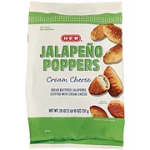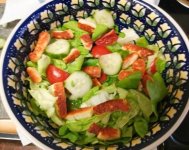Im gonna have to try thatHave you ever tried puttin a teaspoon of olive oil on top your boilin water? It makes the shellin easy, egg slips right out
Become a Patron!
You are using an out of date browser. It may not display this or other websites correctly.
You should upgrade or use an alternative browser.
You should upgrade or use an alternative browser.
Diet tips and tricks
- Thread starter Bliss Doubt
- Start date
gopher_byrd
Cranky Old Fart
VU Donator
Diamond Contributor
ECF Refugee
Member For 5 Years
VU Patreon
Easy way to boil eggs. Put eggs in cold water filled pot. Place on stove until it reaches a full boil. Remove from heat and set a timer for 12 minutes. Then place the eggs in a ice water bath until cool. No hard, bouncy, and green yokes.I haven't tried that, but it's boring to stand at the sink and peel 12 or even just 6 eggs. Also I have a hard time judging how long to let them boil, so I tend to turn them into bouncy rubber balls.
I actually dont mind that green coating. Means they r cooked lol
What i need to learn is how to cook an egg sunny side up, soft boiled, preferably in the microwave, lmfao(j/k on the microwave part, unless u can)
And is there a process for scrambled eggs on an electric stove with low medium and high? Directions always say low-medium, but that never works right so i end up turning it up.
And i know its not right too, i worked in kitchens long enough too know u cook em the same temp as a cheese steak or burger
What i need to learn is how to cook an egg sunny side up, soft boiled, preferably in the microwave, lmfao(j/k on the microwave part, unless u can)
And is there a process for scrambled eggs on an electric stove with low medium and high? Directions always say low-medium, but that never works right so i end up turning it up.
And i know its not right too, i worked in kitchens long enough too know u cook em the same temp as a cheese steak or burger
The best help I can give is with scrambled eggs on an electric stove, my favorite way to eat them, and my kitchen is electric.I actually dont mind that green coating. Means they r cooked lol
What i need to learn is how to cook an egg sunny side up, soft boiled, preferably in the microwave, lmfao(j/k on the microwave part, unless u can)
And is there a process for scrambled eggs on an electric stove with low medium and high? Directions always say low-medium, but that never works right so i end up turning it up.
I think the secret is to use a saucepan or anything with higher sides, rather than using a skillet. In the skillet the egg mixture will spread out and dry out. In the saucepan or small pot, the eggs retain moisture and stay more tender.
Melt your butter (plenty of it) on high heat, sure, but then pour in the egg mixture and immediately lower the heat to medium. The mixture begins to solidify around the edges and underneath. Use a spatula or big spoon to gently scrape the solid toward the center, letting the remaining liquid flow underneath. Take it off heat when it's almost done, because it will continue to cook off heat. When you have removed it from heat, put your cheese on top if you're adding cheese. It will melt in the residual cooking.
Herbs and salt, milk or cream or water, go into the mixture before you add it to the pan. Don't beat it too much because it makes the eggs tough. Black pepper is ground onto the finished dish, to keep it's strength and fragrance.
I also like to cook eggs in an ovenproof soup dish, and it makes like a souffle. Butter an oven safe single serving dish, pour in the egg mixture, and drop a spoonful of jam or jelly right in the center (don't stir it). Put the mug on a baking sheet in the oven at 350. I wish I could say how long in the oven, but I haven't kept track. You start to smell it when it's ready, and it too will continue to cook once out of the oven. Remember to leave it on the baking sheet while it cools down, until you can touch it. One drop of water on hot ceramic coming out of the oven will break the dish.
This is the dish I use for the oven souffleed eggs. It comes in 16, 18 or 20 oz. The 18 or 20 works best. The 16 oz. is too small for this use if you're having two eggs. These come with a sturdy lid for leftovers into the fridge.

As for sunnyside or microwaving, can't tell ya. Don't have a microwave, and any time I've tried to do sunnyside up on the stove, or over easy, they end up being scrambled eggs anyway. Gordon Ramsey has a video on YT, showing how you spoon up the hot butter and pour it over the yolk while cooking, to make sure that membrane around the yolk gets cooked.
Soft boiled, dunno. I'm looking forward to trying Goph's tip for making hard boiled eggs, and if I succeed I'll spring from there to try soft boiled. There is nothing more delicate and lovely than a perfect soft boiled egg.
Last edited:
Suflee eggs are out of my league, but thatnks for the tips on scrambling. Thats sort of the process i use, but the cheese never melts quick enough unless its that prepackaged cheez product.
Also, i put a bit of milk in the scrambled yolk to fluf it up a bit before i dump it in the skillet (which i will try something else maybe, like a wok or something)
Practice practice practice i guess, same as wicking a vape
Also, i put a bit of milk in the scrambled yolk to fluf it up a bit before i dump it in the skillet (which i will try something else maybe, like a wok or something)
Practice practice practice i guess, same as wicking a vape
Last edited:
Suflee eggs are out of my league...
You have no idea how easy it is. No work. Mix up your eggs, pour them into the buttered oven mug, drop in the spoonful of jam, bake at 350 until it's risen.
It isn't a dessert souffle recipe. It's just letting your scrambled eggs bake and rise in the oven. Talkin' fluffy.
This was my dinner last night, three jalapeno poppers, 97 calories apiece, with a little salad I used to make lettuce wraps for them. They're bigger than they look in this pic, very filling, and the three left me enough calorie allowance for a mini ice cream cone for dessert.
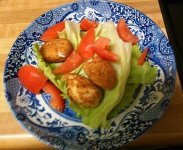
I've been obsessed with these poppers lately, as I'm working my way through a big 26 oz. bag of the frozen store brand. These are about equal in quality to the fast food versions, maybe even a little better, but store brand and fast food poppers all contain seed oils, so I'm not planning to buy them again. I'm planning to learn to make them myself.
The directions on the package say to preheat the oven to 450 degrees. I never fall for that. I put them in the cold oven and start it on 350. Once heated, you still have the crunchy coating, but inside they stay more tender, and don't dry out.
Jalapeno poppers have been around as long as I can remember. I like them as a finger food appetizer, and you don't tend to go overboard like you might with other kinds of hors d'oeuvre because they're hot peppers, so if you just keep eating and eating you might distress yourself.
I put more popper ideas on the cooking thread a few minutes ago.

I've been obsessed with these poppers lately, as I'm working my way through a big 26 oz. bag of the frozen store brand. These are about equal in quality to the fast food versions, maybe even a little better, but store brand and fast food poppers all contain seed oils, so I'm not planning to buy them again. I'm planning to learn to make them myself.
The directions on the package say to preheat the oven to 450 degrees. I never fall for that. I put them in the cold oven and start it on 350. Once heated, you still have the crunchy coating, but inside they stay more tender, and don't dry out.
Jalapeno poppers have been around as long as I can remember. I like them as a finger food appetizer, and you don't tend to go overboard like you might with other kinds of hors d'oeuvre because they're hot peppers, so if you just keep eating and eating you might distress yourself.
I put more popper ideas on the cooking thread a few minutes ago.
What brand r those?
This was my dinner last night, three jalapeno poppers, 97 calories apiece, with a little salad I used to make lettuce wraps for them. They're bigger than they look in this pic, very filling, and the three left me enough calorie allowance for a mini ice cream cone for dessert.
View attachment 209234
I've been obsessed with these poppers lately, as I'm working my way through a big 26 oz. bag of the frozen store brand. These are about equal in quality to the fast food versions, maybe even a little better, but store brand and fast food poppers all contain seed oils, so I'm not planning to buy them again. I'm planning to learn to make them myself.
The directions on the package say to preheat the oven to 450 degrees. I never fall for that. I put them in the cold oven and start it on 350. Once heated, you still have the crunchy coating, but inside they stay more tender, and don't dry out.
Jalapeno poppers have been around as long as I can remember. I like them as a finger food appetizer, and you don't tend to go overboard like you might with other kinds of hors d'oeuvre because they're hot peppers, so if you just keep eating and eating you might distress yourself.
I put more popper ideas on the cooking thread a few minutes ago.
What brand r those?
HEB grocery store brand.
I mist have mixed up threads, chilli peppers r chilli peppers,HEB grocery store brand.
Edit-I used to have a friend whose job it was to roast the fresh chili peppers for some food place. He had to sit there all day turning a grated barrel on a spindle with blowtorchs going underneath...just reminiscing, no point at all with this statement
Last edited:
The diet tip in this case is to not do this, but if u r low on funds and want the most u can get for the least $:
Wendys 5 dollar biggie bag with the daves double burger, swap for large fries and the drink swapped to a large frosty is only around $6.50. That comes with 4 chix nugs too
Wendys 5 dollar biggie bag with the daves double burger, swap for large fries and the drink swapped to a large frosty is only around $6.50. That comes with 4 chix nugs too
The diet tip in this case is to not do this...
I have made the point in this thread that there are ways to enjoy fast food in a permanent healthy eating plan, and Wendys is one of the better choices IMO, but probably not the "biggie bag" you're describing.
I like Dave's classic single burger in a lettuce wrap, plain baked potato w/ salt and pepper, and unsweetened iced tea or black coffee, and it really hits the spot, but there can be slip-ups.
Have you tried the limited time pumpkin spice frosty? They have a "junior" size, below the small-medium-large, but still 200 calories in that junior. I didn't think it had enough flavor to taste like pumpkin spice, but it was something more than vanilla. It was pretty good.
When it comes to a little treat that won't leave you feeling remorseful and depressed, because it doesn't break any rules, there is "as much as", and there is "more than".
I'm using stock photos rather than get out the phone again after taking this portrait of Frank, the Texas Frankengourd halloween creature I also picked up today (he has moved outside to the front steps with all the other halloween veg creatures people have put out).

Anyway right now I don't have all of these in the freezer, but I have had all of them at one time or another. Today I tried the Halo Top light ice cream brownie batter pops:
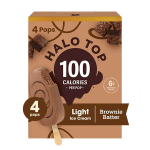
They're "as much as" an ice cream treat as pretty much any other fudgsicle. They don't really taste like brownie batter, don't have any brownie chunks or dough pieces. That swirl you see on the package seems like nothing more than a little painting of chocolate syrup. I really like Halo Top products, but this one is a bit of a disappointment. Not bad though, just not great.
Believe it or not, the Weight Watchers giant fudge pops are only 90 calories apiece, taste better, and the ingredients are cleaner. I didn't get these WW this time, but I've had them in the past.
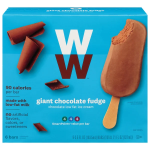
In the "more than" category, these are a knock-out, Magnum Mini dark chocolate truffle, but they're 150 calories apiece. So if you have an evening when it's just salad for dinner, and you squeeze one of these into your plan, you will truly feel you've had a treat. The only objectionable ingredient, to me, is soy lecithin, and it's pretty low on the list of ingredients. Ingredients are always listed in order of predominance. Yummmm...
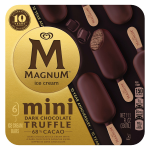
Bon appetit.
I'm using stock photos rather than get out the phone again after taking this portrait of Frank, the Texas Frankengourd halloween creature I also picked up today (he has moved outside to the front steps with all the other halloween veg creatures people have put out).

Anyway right now I don't have all of these in the freezer, but I have had all of them at one time or another. Today I tried the Halo Top light ice cream brownie batter pops:

They're "as much as" an ice cream treat as pretty much any other fudgsicle. They don't really taste like brownie batter, don't have any brownie chunks or dough pieces. That swirl you see on the package seems like nothing more than a little painting of chocolate syrup. I really like Halo Top products, but this one is a bit of a disappointment. Not bad though, just not great.
Believe it or not, the Weight Watchers giant fudge pops are only 90 calories apiece, taste better, and the ingredients are cleaner. I didn't get these WW this time, but I've had them in the past.

In the "more than" category, these are a knock-out, Magnum Mini dark chocolate truffle, but they're 150 calories apiece. So if you have an evening when it's just salad for dinner, and you squeeze one of these into your plan, you will truly feel you've had a treat. The only objectionable ingredient, to me, is soy lecithin, and it's pretty low on the list of ingredients. Ingredients are always listed in order of predominance. Yummmm...

Bon appetit.
Buttermilk can be dressing by itself. No mayo or sour cream needed. I once saw a TV chef saying that if you compare the consistency of buttermilk to that of a vinaigrette, you see the buttermilk is thicker, clings to the spoon and drops slowly.
I have said elsewhere that I'm on a rampage to get these ubiquitous cheap seed oils out of my diet, due to the damage they can do to your health. Even organic mayo will contain organic seed oils. The ones that don't are so expensive I just can't stand it any more.
So I used an old empty wide mouth dressing jar, poured in the buttermilk, added some chopped fresh dill and fresh crushed garlic. I tasted it, not there yet. Added some salt. Still needed something, so I added some powder from the packet of organic ranch dressing mix, not the whole packet. The ranch powder contains xantham gum, which is a natural thickener. It tastes good, but the powder doesn't blend easily, at least not into buttermilk. My first taste got me a mouthful of powder, gack. So I screwed on the lid and shook shook shook. Then I turned the jar upside down and let it sit, for top and bottom to trade places, then upright for top and bottom to trade places again, then shook some more. Still needed something, so I added plain yellow mustard, a generous amount, stir stir stir, shake shake shake, and: Perfect!! Rich, creamy, lots of flavor, and really not any more thin or runny than pourable dressings in the narrow neck bottles, your Wishbone, Kraft etc.
Calories:
The buttermilk label says 170 calories per cup, so:
85 cal. the half cup
42.5 cal. the quarter cup
There are 4 tablespoons in a quarter cup, and I measured when I dressed my salad. I used 4 tablespoons, so we'll round it up to 43 calories for the dressing on this humongous salad.

Your recipe can have ingredients you choose, and you don't have to use the dressing powder mix.
I have said elsewhere that I'm on a rampage to get these ubiquitous cheap seed oils out of my diet, due to the damage they can do to your health. Even organic mayo will contain organic seed oils. The ones that don't are so expensive I just can't stand it any more.
So I used an old empty wide mouth dressing jar, poured in the buttermilk, added some chopped fresh dill and fresh crushed garlic. I tasted it, not there yet. Added some salt. Still needed something, so I added some powder from the packet of organic ranch dressing mix, not the whole packet. The ranch powder contains xantham gum, which is a natural thickener. It tastes good, but the powder doesn't blend easily, at least not into buttermilk. My first taste got me a mouthful of powder, gack. So I screwed on the lid and shook shook shook. Then I turned the jar upside down and let it sit, for top and bottom to trade places, then upright for top and bottom to trade places again, then shook some more. Still needed something, so I added plain yellow mustard, a generous amount, stir stir stir, shake shake shake, and: Perfect!! Rich, creamy, lots of flavor, and really not any more thin or runny than pourable dressings in the narrow neck bottles, your Wishbone, Kraft etc.
Calories:
The buttermilk label says 170 calories per cup, so:
85 cal. the half cup
42.5 cal. the quarter cup
There are 4 tablespoons in a quarter cup, and I measured when I dressed my salad. I used 4 tablespoons, so we'll round it up to 43 calories for the dressing on this humongous salad.

Your recipe can have ingredients you choose, and you don't have to use the dressing powder mix.
Last edited:
Buttermilk dressing 2.0
I'm not posting this as an improvement to my buttermilk dressing above. This is just a different version. It will go nicely on a salad when you don't have fresh tomatoes.
To the original recipe above, I added two tablespoons tomato paste and a little more salt (the tomato paste I used contains no salt.
Instead of endless shaking and stirring this time, I poured my original dressing into a bowl, added the new ingredients and stirred it together in no time with a small whisk. Then returned it to the same jar.
It's mouth watering.
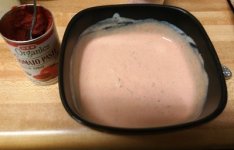
I'm not posting this as an improvement to my buttermilk dressing above. This is just a different version. It will go nicely on a salad when you don't have fresh tomatoes.
To the original recipe above, I added two tablespoons tomato paste and a little more salt (the tomato paste I used contains no salt.
Instead of endless shaking and stirring this time, I poured my original dressing into a bowl, added the new ingredients and stirred it together in no time with a small whisk. Then returned it to the same jar.
It's mouth watering.

Delicious Almond Crepes

Instructions:
Pre-heat oven to 400 degrees and mix:
• 4 eggs
• 1/8 c. agave nectar
• 1/4 c. applesauce (unsweetened)
Set aside when blended well.
Take a 1/3-cup measuring cup, pour 1 scoop of JaylabPro Vanilla protein powder, then top the remaining space with almond flour.
Dump this first 1/3 c. measuring cup (filled partially with protein powder and partially with almond flour) into a separate bowl, then add the following ingredients:
• 1 2/3 cup almond flour
• 1/4 tsp baking powder
• 1/3 tsp salt
Mix dry ingredients into the wet, whisk till you get a thick batter, drop onto an ungreased cookie sheet (1-2 tbsp per crepe) with a tablespoon, and bake.
No need to flip, they will bake perfectly! Take them out when fully cooked, about 7-8 minutes. Put on a plate, add Greek yogurt (in the flavor of your choice-vanilla works great) in a line down the middle. Roll snugly, with the seam facing down onto a plate.
Microwave a handful of berries (your favorites) with 1 tbsp. agave, or just leave unsweetened. Microwave for 35 seconds till soft, and spoon your berry mixture over the top of the rolled crepe
Recipes yields 2 dozen crepes.
Nutrient Profile: (per crepe)
Calories: 67
Protein: 4 gms
Carbohydrates: 3 gms
Fat: 5gms
Here's one someone might like, looks delicious to me
Last edited:
Cinnamon, a common household spice, holds promising benefits for abdominal fat reduction.
Scientific Benefits
Ingredients:
-1-inch cinnamon bark
-4-5 lime wedges, mint leaves
-1 cup water
Instructions: Soak cinnamon overnight, add mint and lime in the morning.
For effective weight loss results, one cup of the Cinnamon Fat Burner Detox Water per day is recommended.
Scientific Benefits
- Induction of Brown Fat: Cinnamon extract was shown to increase brown fat levels, which burns calories instead of storing them.
- Improved Insulin Sensitivity: Polyphenols in cinnamon can alleviate insulin resistance, reducing fat accumulation.
- Lowering Fasting Blood Sugar: Helps manage diabetes and weight concurrently.
- Reduced LDL & Triglycerides: Aids in cardiovascular health by lowering bad cholesterol and triglycerides.
Ingredients:
-1-inch cinnamon bark
-4-5 lime wedges, mint leaves
-1 cup water
Instructions: Soak cinnamon overnight, add mint and lime in the morning.
For effective weight loss results, one cup of the Cinnamon Fat Burner Detox Water per day is recommended.
With the chilly weather I got a craving for nice warm oatmeal. I avoid the flavored ones, because in addition to sugar they can have additives I don't want, but there are options. Some of them have only sugar and natural flavors added.
Anyway, I used this plain organic one:
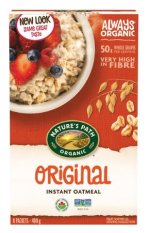
Stock photo
I mixed up a packet with hot water and a pinch of cinnamon, then sprinkled on a quarter cup pecan halves and one tablespoon high cacao content chocolate chips. Don't stir in the other ingredients, to keep the chocolate chips almost whole. They do melt a little bit anyway. I ended up taking my bowl back to the kitchen to add a dash of salt, which it needed because the oatmeal and pecans are unsalted.
Calories:
One packet oatmeal: 190 cal.
1/4 cup pecan halves: 170 cal.
1 tablespoon dark chocolate chips: 70 cal.
Dash of cinnamon
Dash of salt
Total this recipe: 430 calories
Be careful with the measurement of the pecans. That calorie count is for a quarter cup of whole halves. A quarter cup of chopped pecans will have a considerably higher calorie count.
Some may find a little melted butter will add a lot to the flavor. I didn't do that. It was pretty rich the way I did it.
Anyway, I used this plain organic one:

Stock photo
I mixed up a packet with hot water and a pinch of cinnamon, then sprinkled on a quarter cup pecan halves and one tablespoon high cacao content chocolate chips. Don't stir in the other ingredients, to keep the chocolate chips almost whole. They do melt a little bit anyway. I ended up taking my bowl back to the kitchen to add a dash of salt, which it needed because the oatmeal and pecans are unsalted.
Calories:
One packet oatmeal: 190 cal.
1/4 cup pecan halves: 170 cal.
1 tablespoon dark chocolate chips: 70 cal.
Dash of cinnamon
Dash of salt
Total this recipe: 430 calories
Be careful with the measurement of the pecans. That calorie count is for a quarter cup of whole halves. A quarter cup of chopped pecans will have a considerably higher calorie count.
Some may find a little melted butter will add a lot to the flavor. I didn't do that. It was pretty rich the way I did it.
I love oatmeal. I have it with 1/2 cut up organic pink lady apple, organic walnuts, and 2 organic Medjool dates for sweetener, and salt
I don't have a clue of how many calories it comes too but half a pink lady apple can't be much, the walnuts can't be too much but they give your body healthy oil and nutrients, now the dates, hmmm they are full of natural sugars that your body can use and burn for energy to start the day.
I don't have a clue of how many calories it comes too but half a pink lady apple can't be much, the walnuts can't be too much but they give your body healthy oil and nutrients, now the dates, hmmm they are full of natural sugars that your body can use and burn for energy to start the day.
I love oatmeal. I have it with 1/2 cut up organic pink lady apple, organic walnuts, and 2 organic Medjool dates for sweetener, and salt
I don't have a clue of how many calories it comes too
We all have different daily calorie requirements. I list the calories on my recipes in this thread so people can figure out how much of any ingredient they want to use in their own versions.
Yours sounds delicious.
Here's a good winter, or anytime soup, very tasty
Mexican Soup
1 can organic garbanzo beans
1 can organic black beans
1 can organic corn
1 can organic tomatoes diced (We used a pint jar of homegrown)
1 large organic onion chopped
1 Organic bell pepper, (we always use a red bell out of the garden)
This isn't in her original recipe but I always throw in a good helpin of my hot pepper rings out of the garden spices it up nicely but thats an option
1 packet of organic taco seasoning, this would taste a lot better with home made taco seasonin
But anyway THIS IS DELICIOUS and prolly pretty low cal. and very good for you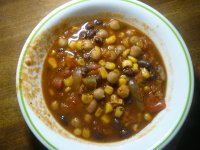
Mexican Soup
1 can organic garbanzo beans
1 can organic black beans
1 can organic corn
1 can organic tomatoes diced (We used a pint jar of homegrown)
1 large organic onion chopped
1 Organic bell pepper, (we always use a red bell out of the garden)
This isn't in her original recipe but I always throw in a good helpin of my hot pepper rings out of the garden spices it up nicely but thats an option
1 packet of organic taco seasoning, this would taste a lot better with home made taco seasonin
But anyway THIS IS DELICIOUS and prolly pretty low cal. and very good for you

Climbing out of the abyss
So you've achieved some of your eating, exercise and weight goals, but you're backsliding. Why?
I wish I knew why. Low grade depression over things you're not allowing into the forefront of your mind? Apathy because you're not getting out much these days? Tempting new products in the market? Maybe it's just that your excitement has subsided after maintaining for a while, because you're no longer experiencing rapid changes in your clothing sizes, or the surprise in the eyes of people you haven't seen in a while.
The more important question than why, is how to get back on track and feel good again, about life, about yourself. I've been on this road long enough to know you have to find ways to make it easy for yourself, because if it's too hard you'll give up and keep on the downward spiral.
So yes, I have been backsliding since around Halloween, and I didn't even buy halloween candy, nor have I been eating out much. I enjoy food blogs and cooking videos, so there is where I have to curtail my curiosity for a while, and focus on what's in my kitchen, and what I'm doing with my life.
Groceries and meal planning. If you're having a hard time, then plan a week of meals and snacks, and have groceries at the ready--no extra stuff. Have three kinds of lettuce around, two kinds of tomatoes, whatever other raw and fermented ingredients you like in your refreshing salads. Extra tons of little grape tomatoes are a secret weapon for me, for snacking. Make up a batch of your favorite dressing. Assess your supply of other veg, and plan recipes for using them up. I made a list of three recipes I want to try, with healthy combinations of proteins, veg and starch. I laid in supplies of the 30 calorie meringues, the 25 calorie pizzelle cookies and the mini ice cream cones for controlled desserts and sweet snacks.
Get moving. I have favorite videos for exercising. I would link them all, but we all have favorite music styles and rhythms. These are just two I'll offer, as easy for standing, watching and copying the motions, getting your circulation going.
This one is more complicated, and I won't do anything that requires sitting or lying on the floor. I am, however, still limber enough to bend down and place my palms flat on the floor, so the lying down stretches you see here, I do from a standing position. This features a beautiful studio, attractive people, great music to inspire and invigorate:
The two of those vids combined come to 7 minutes total, and I find myself repeating the moves any time I'm standing with nothing else to do, such as talking on the phone or standing at the stove.
I'm already feeling better just for thinking about getting back on track, and making good plans. The darkness on the path of giving up is just too frightening to think about.
My other current search is to find YouTube channels by people who don't believe in diets. I don't either. Eating and exercising for your best health is your life, not a temporary plan for you to discard at the end, before going back to your habits of self harm.
I'm interested in receiving tips about what you do to hang on and climb back up when you're backsliding.
So you've achieved some of your eating, exercise and weight goals, but you're backsliding. Why?
I wish I knew why. Low grade depression over things you're not allowing into the forefront of your mind? Apathy because you're not getting out much these days? Tempting new products in the market? Maybe it's just that your excitement has subsided after maintaining for a while, because you're no longer experiencing rapid changes in your clothing sizes, or the surprise in the eyes of people you haven't seen in a while.
The more important question than why, is how to get back on track and feel good again, about life, about yourself. I've been on this road long enough to know you have to find ways to make it easy for yourself, because if it's too hard you'll give up and keep on the downward spiral.
So yes, I have been backsliding since around Halloween, and I didn't even buy halloween candy, nor have I been eating out much. I enjoy food blogs and cooking videos, so there is where I have to curtail my curiosity for a while, and focus on what's in my kitchen, and what I'm doing with my life.
Groceries and meal planning. If you're having a hard time, then plan a week of meals and snacks, and have groceries at the ready--no extra stuff. Have three kinds of lettuce around, two kinds of tomatoes, whatever other raw and fermented ingredients you like in your refreshing salads. Extra tons of little grape tomatoes are a secret weapon for me, for snacking. Make up a batch of your favorite dressing. Assess your supply of other veg, and plan recipes for using them up. I made a list of three recipes I want to try, with healthy combinations of proteins, veg and starch. I laid in supplies of the 30 calorie meringues, the 25 calorie pizzelle cookies and the mini ice cream cones for controlled desserts and sweet snacks.
Get moving. I have favorite videos for exercising. I would link them all, but we all have favorite music styles and rhythms. These are just two I'll offer, as easy for standing, watching and copying the motions, getting your circulation going.
This one is more complicated, and I won't do anything that requires sitting or lying on the floor. I am, however, still limber enough to bend down and place my palms flat on the floor, so the lying down stretches you see here, I do from a standing position. This features a beautiful studio, attractive people, great music to inspire and invigorate:
The two of those vids combined come to 7 minutes total, and I find myself repeating the moves any time I'm standing with nothing else to do, such as talking on the phone or standing at the stove.
I'm already feeling better just for thinking about getting back on track, and making good plans. The darkness on the path of giving up is just too frightening to think about.
My other current search is to find YouTube channels by people who don't believe in diets. I don't either. Eating and exercising for your best health is your life, not a temporary plan for you to discard at the end, before going back to your habits of self harm.
I'm interested in receiving tips about what you do to hang on and climb back up when you're backsliding.
Last edited:
Thought this might be at home here too
eat of the following plant-based foods to gain access to 20 grams of protein, it’s hardly worth the tradeoff:
eat of the following plant-based foods to gain access to 20 grams of protein, it’s hardly worth the tradeoff:
- 1 cup of lentils (40g carbs—230 cals)
- 1 can of chickpeas (61g carbs—720 cals)
- 2 ½ cups of quinoa (97g carbs—221 cals)
- 1 cup pumpkin seed (34g carbs—570 cals)
- 1 cup of peanuts: (12g carbs—451 cals)
Yesterday I brought home this beautiful lettuce with the roots still attached. I'll come back and edit this post when I figure out what kind of salad to make with it, maybe oven fry some of that Halloumi, place it over the lettuce leaves and add some tomato wedges, drizzle with balsamic. I have a little bunch of fresh dill too.
I should have backed up a bit to show how big this is. It's even an inch or so taller than you see here.
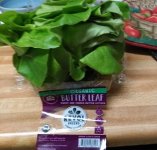
I should have backed up a bit to show how big this is. It's even an inch or so taller than you see here.

I bought this for a few reasons.
It's 15 calories for the whole 6 oz bottle.
It's organic.
It's in this cute bottle I wanted to rinse out afterwards and use for crafting.
It was on sale (wish I'd gotten 10 of them, but didn't know if they were good).
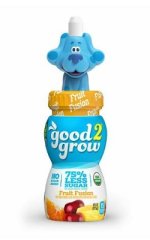
Other flavors have different characters on top. The one I'm showing is "fruit fusion". To be sure, the first ingredient on the list is water, then apple juice, then flavorings and stevia leaf. It doesn't taste like apple juice at all, but there are "natural flavorings" in there too. There actually is no sugar in it. That comparison on the label "75 percent less sugar" is a comparison to the amount of naturally occurring sugar in the 100 percent fruit juice varieties. I'm not saying replacing fruit juice with water is a virtue. It is what it is.
It kind of tastes like a fruit punch. I was surprised at how delicious it tastes, and I plan to get more, not to drink as it comes, but to mix with sparkling water, like the pineapple flavor sparklers I have which have almost no flavor.
15 calories, yummy for swallowing your supplements, adding flavor to your sparkling water, or for a snack or a mixed drink.
It's 15 calories for the whole 6 oz bottle.
It's organic.
It's in this cute bottle I wanted to rinse out afterwards and use for crafting.
It was on sale (wish I'd gotten 10 of them, but didn't know if they were good).

Other flavors have different characters on top. The one I'm showing is "fruit fusion". To be sure, the first ingredient on the list is water, then apple juice, then flavorings and stevia leaf. It doesn't taste like apple juice at all, but there are "natural flavorings" in there too. There actually is no sugar in it. That comparison on the label "75 percent less sugar" is a comparison to the amount of naturally occurring sugar in the 100 percent fruit juice varieties. I'm not saying replacing fruit juice with water is a virtue. It is what it is.
It kind of tastes like a fruit punch. I was surprised at how delicious it tastes, and I plan to get more, not to drink as it comes, but to mix with sparkling water, like the pineapple flavor sparklers I have which have almost no flavor.
15 calories, yummy for swallowing your supplements, adding flavor to your sparkling water, or for a snack or a mixed drink.
Deleted because I already posted it in November.
Last edited:
My supper salad tonite was pretty stupendous.
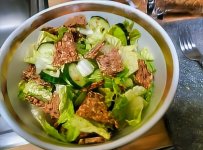
I wasn't looking to save calories really, since I didn't have much for breakfast-lunch, but I'm surprised at how full I am for these calories:
I'll never count calories for the cucumbers, romaine and fresh thyme.
The sweet jalapenos I would estimate at around 50 calories, probably less, but the calorie count on the jar is given by the ounce.
My homemade buttermilk ranch dressing (posted October 18 on this page) is about 12 cal. per tablespoon x 3 I used to dress this salad = 36 cal.
Salt & red pepper flakes
The two seeded crispbreads I broke up for crouton were 130 cal. apiece = 260 total
Total calories: 346
Room for a little dessert, what will it be? Aha! My dairy free hot chocolate (see recipe I posted in this thread October 16, 2022).

I read Hershey's ended 2023 with poor financial results. I wonder if it was due to consumer boycotts ever since they demanded all their employees get vaxxed or get fired. You can hang with falling profits for a while, but eventually they catch up with you. Hersh's offered something like a six weeks severance package to vax refusers, but only if they agreed never to discuss it with the press. Blackmail on top of health intrusion. I haven't touched the brand since then, and never will again. Too bad. Great old company, but their products already had become pretty mediocre by then.

I wasn't looking to save calories really, since I didn't have much for breakfast-lunch, but I'm surprised at how full I am for these calories:
I'll never count calories for the cucumbers, romaine and fresh thyme.
The sweet jalapenos I would estimate at around 50 calories, probably less, but the calorie count on the jar is given by the ounce.
My homemade buttermilk ranch dressing (posted October 18 on this page) is about 12 cal. per tablespoon x 3 I used to dress this salad = 36 cal.
Salt & red pepper flakes
The two seeded crispbreads I broke up for crouton were 130 cal. apiece = 260 total
Total calories: 346
Room for a little dessert, what will it be? Aha! My dairy free hot chocolate (see recipe I posted in this thread October 16, 2022).

I read Hershey's ended 2023 with poor financial results. I wonder if it was due to consumer boycotts ever since they demanded all their employees get vaxxed or get fired. You can hang with falling profits for a while, but eventually they catch up with you. Hersh's offered something like a six weeks severance package to vax refusers, but only if they agreed never to discuss it with the press. Blackmail on top of health intrusion. I haven't touched the brand since then, and never will again. Too bad. Great old company, but their products already had become pretty mediocre by then.
Last edited:
I ran across this recipe for healthy(healthier anyway) fudge and thought this thread seemed like a fitting place for it. For anyone looking for a fudge fix without all the calories, also non-dairy and no refined sugar. I have NOT made this, but it is supposed to be smooth and creamy.
1 piece = 98 calories, 7g carbohydrates , 3g protein, 7g fat (2g saturated fat), 23mg sodium, 2g fiber, 4g sugar
net carbs = 5
- 2 oz unsweetened chocolate, roughly chopped
- 1/2 cup + 2 tbsp unsweetened natural peanut butter (ie the only ingredients in the peanut butter are peanuts and salt) NOTE- can substitute natural almond butter
- 3-4 tbsp honey NOTE- must be honey or a sweetener that has the same consistency, thinner sweeteners such as maple syrup prevent it from setting up properly
- Line an 8x4 loaf pan with parchment paper
- Melt chocolate until completely melted and smooth. If melting in a microwave heat in 15-30 second intervals stirring with a spatula between heatings. If melting on a stovetop use the double boiler method.
- Add the peanut butter to the melted chocolate stirring with a spatula until fully incorporated, the mixture should be smooth and uniform in color.
- Stir in the honey until fully incorporated. The mixture should thicken slightly after stirring in the honey.
- Pour into the lined loaf pan spread evenly with the spatula and smooth the surface.
- Chill for an hour in the fridge, or until set. Cut into pieces with a sharp knife, and keep stored in the fridge to keep it from becoming too soft.
1 piece = 98 calories, 7g carbohydrates , 3g protein, 7g fat (2g saturated fat), 23mg sodium, 2g fiber, 4g sugar
net carbs = 5
I ran across this recipe for healthy(healthier anyway) fudge and thought this thread seemed like a fitting place for it. For anyone looking for a fudge fix without all the calories, also non-dairy and no refined sugar. I have NOT made this, but it is supposed to be smooth and creamy.
- 2 oz unsweetened chocolate, roughly chopped
- 1/2 cup + 2 tbsp unsweetened natural peanut butter (ie the only ingredients in the peanut butter are peanuts and salt) NOTE- can substitute natural almond butter
- 3-4 tbsp honey NOTE- must be honey or a sweetener that has the same consistency, thinner sweeteners such as maple syrup prevent it from setting up properly
According to the author, this makes 14 pieces, cutting it into 16 would seem easier, but...Nutrition info as written (again, per the author)
- Line an 8x4 loaf pan with parchment paper
- Melt chocolate until completely melted and smooth. If melting in a microwave heat in 15-30 second intervals stirring with a spatula between heatings. If melting on a stovetop use the double boiler method.
- Add the peanut butter to the melted chocolate stirring with a spatula until fully incorporated, the mixture should be smooth and uniform in color.
- Stir in the honey until fully incorporated. The mixture should thicken slightly after stirring in the honey.
- Pour into the lined loaf pan spread evenly with the spatula and smooth the surface.
- Chill for an hour in the fridge, or until set. Cut into pieces with a sharp knife, and keep stored in the fridge to keep it from becoming too soft.
1 piece = 98 calories, 7g carbohydrates , 3g protein, 7g fat (2g saturated fat), 23mg sodium, 2g fiber, 4g sugar
net carbs = 5
Thanks for posting that. All ideas are welcome. Sometimes the "diet" isn't just about weight loss, but about keeping with personal dietary law, such as vegan or whatever, or about satisfying a sweet tooth without consuming a lot of sugar, or about dairy allergies or gluten intolerance.
I'm wondering, for that fudge, if you couldn't just use a healthier sweetened chocolate, like the Hu varieties with either coconut sugar or date sugar, and then not have to add the extra liquid in the form of honey. Anyway, I want to experiment with it soon.
Another way to enjoy a colorful, carefree kiddie breakfast, something I get so nostalgic for on Saturday mornings. And a way to use up 65 pouches of organic gummy bears. First time for today's breakfast-lunch, and immediately a new favorite.
I sometimes think I'll never finish this giant box of organic gummy bears, each of the 65 pouches 70 calories.
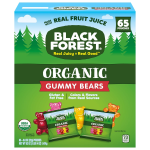
Stock photo
The ingredients seem pretty good for candy:
Organic Tapioca Syrup, Organic Cane Sugar, Water, Gelatin, Organic Lemon Juice Concentrate, Organic Tapioca Starch, Contains 2% or Less of Organic Potato Starch, Organic Agar, Organic Sunflower Oil, Citric Acid, Organic Fruit and Vegetable Juice (Color), Natural Flavors, Organic Turmeric (Color), Organic Orange Oil, Organic Carnauba Wax, Organic Natural Flavor.
I've had this big box for about 18 months. I give them away to peoples' kids, give them to adults, snack on them myself now & then. Still have tons of them. They're really good sprinkled over a bowl of any combination of blackberries, raspberries and blueberries. Any time I do that for company, every last bite gets eaten.
So today I made up two packets of my organic oatmeal and added a pouch of bears.
Oatmeal @ 190 cal. per packet x 2 packets = 380 cal.
One packet gummy bears = 70
Total breakfast-lunch calories = 450
And it was fun and tasty.
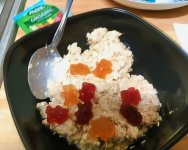
I sometimes think I'll never finish this giant box of organic gummy bears, each of the 65 pouches 70 calories.

Stock photo
The ingredients seem pretty good for candy:
Organic Tapioca Syrup, Organic Cane Sugar, Water, Gelatin, Organic Lemon Juice Concentrate, Organic Tapioca Starch, Contains 2% or Less of Organic Potato Starch, Organic Agar, Organic Sunflower Oil, Citric Acid, Organic Fruit and Vegetable Juice (Color), Natural Flavors, Organic Turmeric (Color), Organic Orange Oil, Organic Carnauba Wax, Organic Natural Flavor.
I've had this big box for about 18 months. I give them away to peoples' kids, give them to adults, snack on them myself now & then. Still have tons of them. They're really good sprinkled over a bowl of any combination of blackberries, raspberries and blueberries. Any time I do that for company, every last bite gets eaten.
So today I made up two packets of my organic oatmeal and added a pouch of bears.
Oatmeal @ 190 cal. per packet x 2 packets = 380 cal.
One packet gummy bears = 70
Total breakfast-lunch calories = 450
And it was fun and tasty.

Is it a cheat or an everyday treat?
Friday is cheat day for me. Cheat day has become a common concept among clean eaters and calorie counters.
For the last couple of years my cheat day has included sweet coffee beverages like this that have flooded the market:
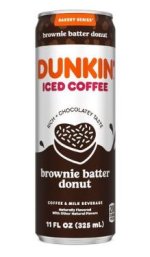
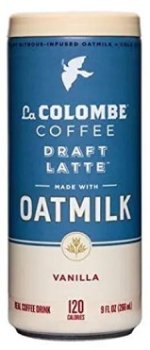
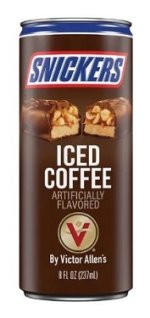
Stock photos
When you have people over and you break them out, your guests love you, but that's looking for love in the wrong places. None of the above are organic, and the ingredients are terrible. I never buy Snickers bars, but I'm drinking Snickers coffee? And I just found out all the packaged Dunkin' drinks are Coca Cola products. Gack.
This one does not have to be restricted to cheat day, 140 calories, good ingredients, it can be a dessert any day. It's never going to be an everyday thing because it's too expensive, and I prefer black coffee on mornings when I have to work. This is my favorite of the Pop & Bottle flavors, but it has become difficult to find.
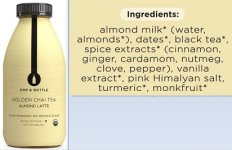
So I spent the big money and bought some DIY stuff to experiment with:
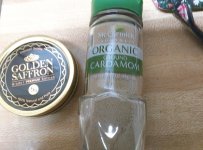
Once you open that bottle of cardamom, better get moving to use it up, because the lovely essential oil that gives cardamom its flavor and fragrance, is very volatile and won't last long.
The saffron is inspired by @SirKadly with his health experiments. Why not? Saffron is renowned for its health benefits.
So I tried making my own specialty beverage. I heated the almond milk to just a scald, then dumped in a lot of cardamom and a few saffron threads.
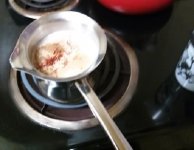
I let it sit a few minutes for the saffron to limber up and release its flavor, then strained it into a cup:
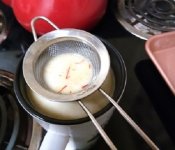
I thought maybe I could drink it healthy just like that, but it needed a big spoonful of sugar.
So it's still a cheat day treat.
Friday is cheat day for me. Cheat day has become a common concept among clean eaters and calorie counters.
For the last couple of years my cheat day has included sweet coffee beverages like this that have flooded the market:



Stock photos
When you have people over and you break them out, your guests love you, but that's looking for love in the wrong places. None of the above are organic, and the ingredients are terrible. I never buy Snickers bars, but I'm drinking Snickers coffee? And I just found out all the packaged Dunkin' drinks are Coca Cola products. Gack.
This one does not have to be restricted to cheat day, 140 calories, good ingredients, it can be a dessert any day. It's never going to be an everyday thing because it's too expensive, and I prefer black coffee on mornings when I have to work. This is my favorite of the Pop & Bottle flavors, but it has become difficult to find.

So I spent the big money and bought some DIY stuff to experiment with:

Once you open that bottle of cardamom, better get moving to use it up, because the lovely essential oil that gives cardamom its flavor and fragrance, is very volatile and won't last long.
The saffron is inspired by @SirKadly with his health experiments. Why not? Saffron is renowned for its health benefits.
So I tried making my own specialty beverage. I heated the almond milk to just a scald, then dumped in a lot of cardamom and a few saffron threads.

I let it sit a few minutes for the saffron to limber up and release its flavor, then strained it into a cup:

I thought maybe I could drink it healthy just like that, but it needed a big spoonful of sugar.
So it's still a cheat day treat.
Whether I put a recipe here or in the regular cooking thread, is a matter of whether or not you can just make it, eat it, and never have to give any thought to the calories.
My new favorite salad is sweet and spicy kimichi fruit salad.
First, one of those big organic navel oranges, so plentiful in all the stores right now, which comes down to this much after you remove all the thick skin and pith.
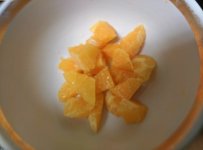
Then some juice packed pineapple chunks, drained:
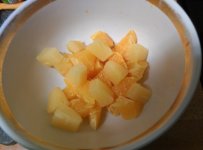
Then the kimchi:
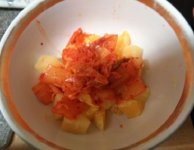
Then plop on some mayo and stir it up.
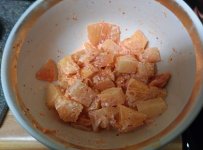
Easy and delicious, my breakfast-lunch today, along with a small packet of teriyaki jerky about to expire in my prepper supplies.
My new favorite salad is sweet and spicy kimichi fruit salad.
First, one of those big organic navel oranges, so plentiful in all the stores right now, which comes down to this much after you remove all the thick skin and pith.

Then some juice packed pineapple chunks, drained:

Then the kimchi:

Then plop on some mayo and stir it up.

Easy and delicious, my breakfast-lunch today, along with a small packet of teriyaki jerky about to expire in my prepper supplies.
Measured goodness.
I could get a food scale if I had an extra inch in my kitchen, or take a one pound package of pasta and try to divide it equally to figure out the calories in a serving, but I just love these and hope they never get discontinued in this packaging, where it comes in three measured bundles as you see here, and it says on the package that each bundle is 270 calories:
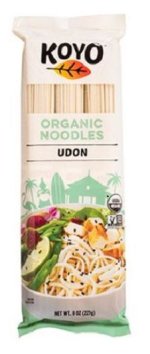
To me this tastes just like any other spaghetti, and cooks in minutes. It doesn't matter what I did with it for breakfast-lunch today, because you'll do what you want with it: marinara, bolognese, alfredo, carbonara, Asian.
The point is that pasta any time, without calorie concerns, puts the world at your feet.
Bon appetit.
I could get a food scale if I had an extra inch in my kitchen, or take a one pound package of pasta and try to divide it equally to figure out the calories in a serving, but I just love these and hope they never get discontinued in this packaging, where it comes in three measured bundles as you see here, and it says on the package that each bundle is 270 calories:

To me this tastes just like any other spaghetti, and cooks in minutes. It doesn't matter what I did with it for breakfast-lunch today, because you'll do what you want with it: marinara, bolognese, alfredo, carbonara, Asian.
The point is that pasta any time, without calorie concerns, puts the world at your feet.
Bon appetit.
Thanks for sharing your scrambled eggs tips! Using a saucepan instead of a skillet sounds like a game-changer. I'll definitely give that a try next time. And the oven souffleed eggs idea with jam in the center? Genius! It's amazing how versatile eggs can be.On a related note, I've been diving into the world of natural foods lately. I recently came across what, in my opinion, is the best organic whey protein powder online. It's a great way to add quality nutrition to your diet without sacrificing taste or quality.As for sunnyside or microwaving eggs, I'm with you—I prefer the stove method.
Edited:
Moderator removed the spam link
Edited:
Moderator removed the spam link
Last edited by a moderator:
My breakfast-lunch today: Pasta Alfredo, vegan organic
A while back I discovered the bundled organic udon, soba and ramen noodles, and have really enjoyed the carefree approach to pasta calories. The package tells you how many calories are in each bundle, and it's usually the right amount for one serving, 270 to 310 calories per bundle, depending on the brand. Pasta is pasta. They all taste like spaghetti. But I still had some of these to use up:
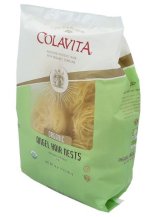
Some time ago in this thread I showed the coils all laid out, to divide the number of coils by the total calories in the bag. They came out to approx. 150 calories per coil. So I used two coils in my dish today.
Coated with Miyokos organic cashew milk garlic & herb cream cheeze, I added a splash of almond milk to loosen it up a bit. It pretty much melted to a creamy Alfredo consistency in the hot pasta. Added some red pepper flakes and a few frozen baby peas, rinsed of ice crystals, at the last minute.
Yummm
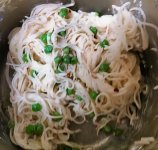
The Miyokos garlic & herb is pretty dang calorie dense, 120 cal. per tablespoon, so I estimate this breakfast-lunch at around 600 calories, while I try to keep my daily total calories at 800, toward those days when I'm being lax at a restaurant or with friends at supper club. I posted this dish here anyway, because all things "diet" are not necessarily about weight loss. Sometimes the concern is clean eating or vegan eating or whatever else. Vegan and organic, this dish checks a couple of important boxes.
A while back I discovered the bundled organic udon, soba and ramen noodles, and have really enjoyed the carefree approach to pasta calories. The package tells you how many calories are in each bundle, and it's usually the right amount for one serving, 270 to 310 calories per bundle, depending on the brand. Pasta is pasta. They all taste like spaghetti. But I still had some of these to use up:

Some time ago in this thread I showed the coils all laid out, to divide the number of coils by the total calories in the bag. They came out to approx. 150 calories per coil. So I used two coils in my dish today.
Coated with Miyokos organic cashew milk garlic & herb cream cheeze, I added a splash of almond milk to loosen it up a bit. It pretty much melted to a creamy Alfredo consistency in the hot pasta. Added some red pepper flakes and a few frozen baby peas, rinsed of ice crystals, at the last minute.
Yummm

The Miyokos garlic & herb is pretty dang calorie dense, 120 cal. per tablespoon, so I estimate this breakfast-lunch at around 600 calories, while I try to keep my daily total calories at 800, toward those days when I'm being lax at a restaurant or with friends at supper club. I posted this dish here anyway, because all things "diet" are not necessarily about weight loss. Sometimes the concern is clean eating or vegan eating or whatever else. Vegan and organic, this dish checks a couple of important boxes.
Last edited:
I figured out something encouraging. I hardly ever have a real cola drink anymore, because I'm accustomed to think it's not a healthy choice. There is a cola flavored unsweetened sparkling water I enjoy very much. When I do break down and give in, I buy one bottle of HEB brand cola because it tastes really good just like the you-know-what brand. Speaking of Coca Cola, I certainly will never buy anything under that brand for various reasons, including their aggressive, predatory behavior toward other cola brands, and its big bad footprint around the world in terms of getting clean water for its manufacturing.
Anyway, earlier this week I was on the soda aisle, and I noticed this about the Main Root Mexicane Cola:
Ingredients: carbonated pure water, Fair Trade Certified organic cane sugar, spices, caffeine, phosphoric acid.
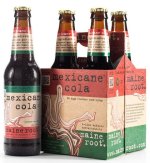
So I convinced myself it was okay to bring home a 4-pack and make it last a year (haha). To keep with that plan, I put one in the fridge and the rest in a cabinet.
So after my dinner tonight, I looked at the calories on that one bottle, 145 cal. The calories in a mini ice cream cone are 140. The Weight Watchers fudgsicle is 100 calories. But when you eat a mini ice cream cone or a 3 inch brownie, it lasts less than 5 minutes and it's gone. You open that 145 calorie bottle of delicious spicy cola, put it down on the tray next to your big chair, with your vape, start a podcast, and enjoy that bottle for at least half an hour, maybe 45 minutes or more.
I'm still not claiming it's a healthy choice. The zero calorie and sugar free sodas contain aspartame or sucralose, which really are unhealthy choices. I guess I'm just saying this Mexicane Cola works for me as a low calorie dessert that delivers a lot of satisfaction.
EDIT: My conscience is gnawing on me, since a 145 calorie bottle of cola contains three tablespoons of sugar, even if it is organic sugar, and no other nutrients. Ice cream, brownies and other small treats at least have some substance, maybe some protein, whatever else, so as much as I enjoy the quality of this cola treat, I'll probably do it no more than once a month.
Anyway, earlier this week I was on the soda aisle, and I noticed this about the Main Root Mexicane Cola:
Ingredients: carbonated pure water, Fair Trade Certified organic cane sugar, spices, caffeine, phosphoric acid.

So I convinced myself it was okay to bring home a 4-pack and make it last a year (haha). To keep with that plan, I put one in the fridge and the rest in a cabinet.
So after my dinner tonight, I looked at the calories on that one bottle, 145 cal. The calories in a mini ice cream cone are 140. The Weight Watchers fudgsicle is 100 calories. But when you eat a mini ice cream cone or a 3 inch brownie, it lasts less than 5 minutes and it's gone. You open that 145 calorie bottle of delicious spicy cola, put it down on the tray next to your big chair, with your vape, start a podcast, and enjoy that bottle for at least half an hour, maybe 45 minutes or more.
I'm still not claiming it's a healthy choice. The zero calorie and sugar free sodas contain aspartame or sucralose, which really are unhealthy choices. I guess I'm just saying this Mexicane Cola works for me as a low calorie dessert that delivers a lot of satisfaction.
EDIT: My conscience is gnawing on me, since a 145 calorie bottle of cola contains three tablespoons of sugar, even if it is organic sugar, and no other nutrients. Ice cream, brownies and other small treats at least have some substance, maybe some protein, whatever else, so as much as I enjoy the quality of this cola treat, I'll probably do it no more than once a month.
Last edited:
Just wanted to share this with all who are watching their calories, we also have to watch the hidden dangers of sweeteners
BEST SWEETENERS
Blackstrap molasses, molasses
Coconut sugar; (crystals and syrup)
Dates
Honey (raw, unfiltered)
Maple syrup (real one)
Yakon syrup
Unprocessed stevia (a natural sweetener)
Pure monk fruit (a natural sweetener)JUST OK
Cane juice and sugar
Date sugar and syrup
Stevia; brands such as Stevia in the Raw, SweetLeaf
Monk fruit (mixed most often with erythritol)
BEST AVOIDED
Agave and agave nectar (high in fructose)
Barley malt
Beet sugar
Brown rice syrup
Brown sugar
Carob syrup
Corn syrup
Dextran and dextrose
Ethyl maltol
Fructose
Fruit juice concentrate
Glucose
Golden sugar/syrupGrape sugar
High -fructose corn syrup
Lactose
Malt syrup
Maltodextrin
Maltose
Manninol
Raw sugar
Sorbitol
Sorghum syrup
Sucrose
Turbinado
Table or white sugar
Xylitol
DO NOT CONSUME
Acesulfame Potassium (Sweet One)
Aspartame (Equal, NutraSweet)
Saccharin (Sweet’N Low)
Stevia (White, bleached, or highly processed; stevia such as Truvia and Sun Crystals)
Sucralose (Splenda)
I don't see Xylitol and Erythritol here. I know Mercola approves of Xylitol. Otherwise I don't know what to think. I found some Texas Tea "Slim", a new line for them, flavors peach, strawberry or blueberry, 5 calories a bottle, using organic tea, fruit juice, touch of honey, touch of cane sugar, and it says "a proprietary blend of erythritol and Stevia". They taste really good, no artificial sweetener taste to them at all.
It couldn't be much of the honey or the sugar, at 5 calories for a 16 oz bottle, but I don't know if I want any more after this because I don't know anything about Erythritol.
I stay away from xylitol and erythritolI don't see Xylitol and Erythritol here. I know Mercola approves of Xylitol. Otherwise I don't know what to think. I found some Texas Tea "Slim", a new line for them, flavors peach, strawberry or blueberry, 5 calories a bottle, using organic tea, fruit juice, touch of honey, touch of cane sugar, and it says "a proprietary blend of erythritol and Stevia". They taste really good, no artificial sweetener taste to them at all.
It couldn't be much of the honey or the sugar, at 5 calories for a 16 oz bottle, but I don't know if I want any more after this because I don't know anything about Erythritol.
I'll see if I can dig up some of the things I've read regarding Erythritol, there are some potential health issues based on some of the articles I've seen, but I don't recall exactly what, cardiovascular issues I think. One thing to bear in mind is that it is actually a sugar alcohol, and is naturally found in our blood as a result of how we metabolize sugars, the issues I read about seemed to be linked to high concentrations. I lean towards staying away from it but everyone should decide for themselves.I don't see Xylitol and Erythritol here. I know Mercola approves of Xylitol. Otherwise I don't know what to think. I found some Texas Tea "Slim", a new line for them, flavors peach, strawberry or blueberry, 5 calories a bottle, using organic tea, fruit juice, touch of honey, touch of cane sugar, and it says "a proprietary blend of erythritol and Stevia". They taste really good, no artificial sweetener taste to them at all.
It couldn't be much of the honey or the sugar, at 5 calories for a 16 oz bottle, but I don't know if I want any more after this because I don't know anything about Erythritol.
I stay away from xylitol and erythritol
I'll see if I can dig up some of the things I've read regarding Erythritol, there are some potential health issues based on some of the articles I've seen, but I don't recall exactly what, cardiovascular issues I think. One thing to bear in mind is that it is actually a sugar alcohol, and is naturally found in our blood as a result of how we metabolize sugars, the issues I read about seemed to be linked to high concentrations. I lean towards staying away from it but everyone should decide for themselves.
Hmmm, thanks guys.
Well there are other things to enjoy.
Take this with a grain of salt, but here is some of what I remembered reading.Hmmm, thanks guys.
Well there are other things to enjoy.
What is erythritol?Like sorbitol and xylitol, erythritol is a sugar alcohol, a carb found naturally in many fruits and vegetables. It has about 70% of the sweetness of sugar and is considered zero-calorie, according to experts.Artificially manufactured in massive quantities, erythritol has no lingering aftertaste, doesn’t spike blood sugar and has less of a laxative effect than some other sugar alcohols. “Erythritol looks like sugar, it tastes like sugar, and you can bake with it,” said Hazen, who also directs the Cleveland Clinic’s Center for Microbiome and Human Health. “It’s become the sweetheart of the food industry, an extremely popular additive to keto and other low-carb products and foods marketed to people with diabetes,” he added. “Some of the diabetes-labeled foods we looked at had more erythritol than any other item by weight.” Erythritol is also the largest ingredient by weight in many “natural” stevia and monkfruit products, Hazen said. Because stevia and monkfruit are about 200 to 400 times sweeter than sugar, just a small amount is needed in any product. The bulk of the product is erythritol, which adds the sugar-like crystalline appearance and texture that consumers expect. Connection between erythritol and cardiovascular issuesThe discovery of the connection between erythritol and cardiovascular issues was purely accidental, Hazen said: “We never expected this. We weren’t even looking for it.”Hazen’s research had a simple goal: find unknown chemicals or compounds in a person’s blood that might predict the risk for a heart attack, stroke or death in the next three years. To do so, the team began analyzing 1,157 blood samples in people at risk for heart disease collected between 2004 and 2011. “We found this substance that seemed to play a big role, but we didn’t know what it was,” Hazen said. “Then we discovered it was erythritol, a sweetener.” The human body naturally creates erythritol but in low amounts that would not account for the levels they measured, he said. To confirm the findings, Hazen’s team tested another batch of blood samples from more than 2,100 people in the United States and an additional 833 samples gathered by colleagues in Europe through 2018. About three-quarters of the participants in all three populations had coronary disease or high blood pressure, and about a fifth had diabetes, Hazen said. Over half were male and in their 60s and 70s. In all three populations, researchers found that higher levels of erythritol were connected to a greater risk of heart attack, stroke or death within three years. But why? To find out, researchers did further animal and lab tests and discovered that erythritol was “provoking enhanced thrombosis,” or clotting in the blood, Hazen said. Clotting is necessary in the human body, or we would bleed to death from cuts and injuries. The same process is constantly happening internally as well. “Our blood vessels are always under pressure, and we spring leaks, and blood platelets are constantly plugging these holes all the time,” Hazen said. However, the size of the clot made by platelets depends on the size of the trigger that stimulates the cells, he said. For example, if the trigger is only 10%, then you only get 10% of a clot. “But what we’re seeing with erythritol is the platelets become super responsive: A mere 10% stimulant produces 90% to 100% of a clot formation,” Hazen said. “For people who are at risk for clotting, heart attack and stroke — like people with existing cardiac disease or people with diabetes — I think that there’s sufficient data here to say stay away from erythritol until more studies are done,” Hazen said. Oliver Jones, a professor of chemistry at RMIT University in Australia, noted that the study had revealed only a correlation, not causation. |
Take this with a grain of salt, but here is some of what I remembered reading.
What is erythritol?
Like sorbitol and xylitol, erythritol is a sugar alcohol, a carb found naturally in many fruits and vegetables. It has about 70% of the sweetness of sugar and is considered zero-calorie, according to experts.
Artificially manufactured in massive quantities, erythritol has no lingering aftertaste, doesn’t spike blood sugar and has less of a laxative effect than some other sugar alcohols.
“Erythritol looks like sugar, it tastes like sugar, and you can bake with it,” said Hazen, who also directs the Cleveland Clinic’s Center for Microbiome and Human Health.
“It’s become the sweetheart of the food industry, an extremely popular additive to keto and other low-carb products and foods marketed to people with diabetes,” he added. “Some of the diabetes-labeled foods we looked at had more erythritol than any other item by weight.”
Erythritol is also the largest ingredient by weight in many “natural” stevia and monkfruit products, Hazen said. Because stevia and monkfruit are about 200 to 400 times sweeter than sugar, just a small amount is needed in any product. The bulk of the product is erythritol, which adds the sugar-like crystalline appearance and texture that consumers expect.
Connection between erythritol and cardiovascular issues
The discovery of the connection between erythritol and cardiovascular issues was purely accidental, Hazen said: “We never expected this. We weren’t even looking for it.”
Hazen’s research had a simple goal: find unknown chemicals or compounds in a person’s blood that might predict the risk for a heart attack, stroke or death in the next three years. To do so, the team began analyzing 1,157 blood samples in people at risk for heart disease collected between 2004 and 2011.
“We found this substance that seemed to play a big role, but we didn’t know what it was,” Hazen said. “Then we discovered it was erythritol, a sweetener.”
The human body naturally creates erythritol but in low amounts that would not account for the levels they measured, he said.
To confirm the findings, Hazen’s team tested another batch of blood samples from more than 2,100 people in the United States and an additional 833 samples gathered by colleagues in Europe through 2018. About three-quarters of the participants in all three populations had coronary disease or high blood pressure, and about a fifth had diabetes, Hazen said. Over half were male and in their 60s and 70s.
In all three populations, researchers found that higher levels of erythritol were connected to a greater risk of heart attack, stroke or death within three years.
But why? To find out, researchers did further animal and lab tests and discovered that erythritol was “provoking enhanced thrombosis,” or clotting in the blood, Hazen said.
Clotting is necessary in the human body, or we would bleed to death from cuts and injuries. The same process is constantly happening internally as well.
“Our blood vessels are always under pressure, and we spring leaks, and blood platelets are constantly plugging these holes all the time,” Hazen said.
However, the size of the clot made by platelets depends on the size of the trigger that stimulates the cells, he said. For example, if the trigger is only 10%, then you only get 10% of a clot.
“But what we’re seeing with erythritol is the platelets become super responsive: A mere 10% stimulant produces 90% to 100% of a clot formation,” Hazen said.
“For people who are at risk for clotting, heart attack and stroke — like people with existing cardiac disease or people with diabetes — I think that there’s sufficient data here to say stay away from erythritol until more studies are done,” Hazen said.
Oliver Jones, a professor of chemistry at RMIT University in Australia, noted that the study had revealed only a correlation, not causation.
Really interesting. Thank you for posting that.
I don't know what my cardiovascular risks really are, but probably best to skip Erythritol. I don't really like added ingredients in things anyway, other than herbs and spices. The unsweetened sparkling waters are best for treats. I got sidetracked because Texas Tea is in that "100 mile diet", being made in Austin. I used to love their "Goodflow" green tea, made with another local product, Goodflow honey.
Thanks again.
Think artificial sweeteners are a healthy alternative to sugar?
Think again.
A study published last month found that xylitol, a low-calorie sweetener used in food, gum, and even toothpaste, may almost double your risk of heart attack and stroke. (1)
A different study found that erythritol, an artificial sweetener used in many keto reduced-sugar foods, may increase dangerous blood clotting. (2)
Think again.
A study published last month found that xylitol, a low-calorie sweetener used in food, gum, and even toothpaste, may almost double your risk of heart attack and stroke. (1)
A different study found that erythritol, an artificial sweetener used in many keto reduced-sugar foods, may increase dangerous blood clotting. (2)

